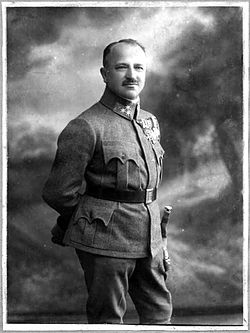Military center converted former home of General Charles Kratochvil Balatonszepezd
Military center Kratochvil General Charles converted former residential house Balatonszepezd. The government's decision on this appeared in Monday's issue of the Hungarian Gazette.
 As a result, the government supports the municipality of Balatonszepezd in order to purchase and renovate the property.
As a result, the government supports the municipality of Balatonszepezd in order to purchase and renovate the property.
Pursuant to the decision, the property will be transformed into an interactive military history memorial center. For this purpose, HUF 150 million will be provided from this year's budget.
Hungarian military officer Károly Kratochvil, commander of the Székely Division, was born in 1869 in Brünn. He later (in 1929) received the Knight's Cross of the Military Order of Maria Theresa for his exploits during the First World War. He died in 1946 in Budapest.
His life:
His father (József Kratochvil) took part in the 1848-49 War of Independence as a sixteen-year-old student in Kőszeg, serving in the artillery. He was wounded during the fighting, captured by the Austrians, and then conscripted into the Austrian army. From being conscripted, he soon became an officer, and in the battle of Custozza in 1866, as a company commander, he occupied the positions of the Italians on Monte Santa Croce with his men. As a reward for his heroism, after receiving the title of Hungarian nobleman, he was allowed to bear the noble name of Szentkereszthegyi (the mirror image of the scene of his heroic deeds).
Károly Kratochvil was born in Brno, and spent his childhood - due to his father's frequent changes of station - all over the Monarchy. Among these locations, Brasó made the deepest impression on him, where he lived between the ages of six and fourteen. Until the end of his life, he considered Brasov his homeland, his wife (Izay Boriska) also came from there. Following his father's example, he prepared for a military career, first he entered the main military realist school in Mährisch Weißkirchen (today: Hranice na Moravě) in Moravia, and then at the age of eighteen he was admitted to the military academy in Bécsujhely. After a short period of service, in 1894 he was admitted to the Vienna Military Academy (Kriegsschule), which institution was considered the anteroom of the general staff. Shortly after completing his studies, in 1900, he was appointed captain of the general staff. It is characteristic of his qualifications and abilities that he became a teacher at the Hadarpród school in Pécs and then at the Ludovika Academy.
The talented young officer was also noticed at court, and from 1909 he supervised the education of Archduke József's two sons, Archduke Ferenc József and László Liutpold. At the beginning of the First World War, he was released from court service at his own request and assigned to front service. From the end of 1914 (as a lieutenant colonel) in the mk. he became the commander of the 4th infantry regiment in Nagyvárad, with his regiment he visited both the Galician and the Italian battlefields. During the battles of Isonzo, his regiment distinguished itself in the defense of the Monte San Michele hill rising near Görz (Gorizia), during the long battles fought in harsh conditions, their uniforms were muddied to the point of being unrecognizable, as a result, the regiment was later called the "clay men". From 1917, Kratochvil became the commander of the 39th brigade (which included the 4th regiment). He later (in 1929) received the Knight's Cross of the Military Order of Maria Theresa for his exploits during the First World War.
At the end of 1918, after the defeat in the war, he led his troops in closed military order to their station, Nagyvárad, which was considered a significant act under the circumstances of the time (Béla Linder's infamous statement, the agitation going on among the soldiers at the front). In November 1918, he was appointed head of the V. Transylvanian Military District Command, in Cluj. This (since the soldiers of the formations were scattered thanks to the Aster Revolution) was actually only an administrative position, with no actual force at his disposal. In December 1918, seeing the invasion of Transylvania by the Romanians, he made efforts to create opportunities for armed resistance, and with great haste organized recruitment to fill up the former Transylvanian regiments. He was approached in Cluj by some young Székely reserve officers who offered to recruit volunteers from the already occupied Székelyland. Kratochvil accepted the plan, this recruitment laid the foundation for the creation of the later Székely Division. On December 24, 1918, the Romanians entered Cluj. Kratochvil had previously decided to draw his troops further west, to the line of heights, passes, and gorges that mark the geographical border of Transylvania, as they were not yet suitable for successful resistance, and there he would wait for the additional troops. From January to April 16, 1919, the Székely Division and other troops under the Transylvanian Military District Command (both were commanded by Kratochvil) successfully stood in the way of the Romanian forces on the front line from Máramarossziget to the Belényes Basin. After the breakthrough of the Romanians, the Székely troops retreated to the vicinity of Mátészalka, then in the hopeless situation they laid down their arms on April 26, 1919, at Demecser. The impossibility of the armed struggle was greatly contributed to by the fact that the Budapest governments hindered the operation of Kratochvil's troops and even launched an armed attack against them, due to their alleged counter-revolutionary nature. After laying down his arms, Kratochvil was interned in Brasov together with his fellow officers.
After his release from captivity (in the meantime, he was being prosecuted for crimes against the Romanian state, with the possibility of the death penalty), from 1921 he was appointed commander of the mixed brigade and military district in Debrecen (at the rank of lieutenant general). At the end of his military career, between 1923 and 1924, he was the director of the Military History Museum, and then he was retired at a young age, in full force. He was active in public life between the two world wars and was a board member of several revisionist, patriotic organizations, such as the Székely Division Association, the National Front Fighter Association, the June 1919 Comrades Association, the Transylvanian Men's Association, and the Turan Hunters Association. He was also a leading official in foreign policy associations called the Hungarian-Polish Association, the Székely-Finnish Society, the Hungarian-French Culture League and the Hungarian Foreign Affairs Association. He was also a member of the management of art societies: he was the president of the National Association of Hungarian Industrial Artists, a committee member of the Hungarian Literary and Art Association and the National Salon Art Association, as well as a member of the board of the Mozart Society. Politically, he sympathized with the Catholic-legitimist circles and was in correspondence with many prominent figures of the movement: gr. With József Hunyady, Sándor Ernstzt, Júsztinián Serédi and Gyula Kornis. His network of contacts reached the highest circles, he was in regular contact with Horthy, Teleki, and Bethlen. During the emergency period, as the head of the Székely Division Association, he also carried out Jewish rescue activities.
After the Second World War and the Second Vienna Decision, he hoped to reactivate it, but this did not happen because the national defense leaders had already changed. After the Soviet occupation, his existence collapsed, he also lost his apartment in Budapest. He died in 1946 in Budapest.
823 total views, 1 today
823 total views, 1 today










